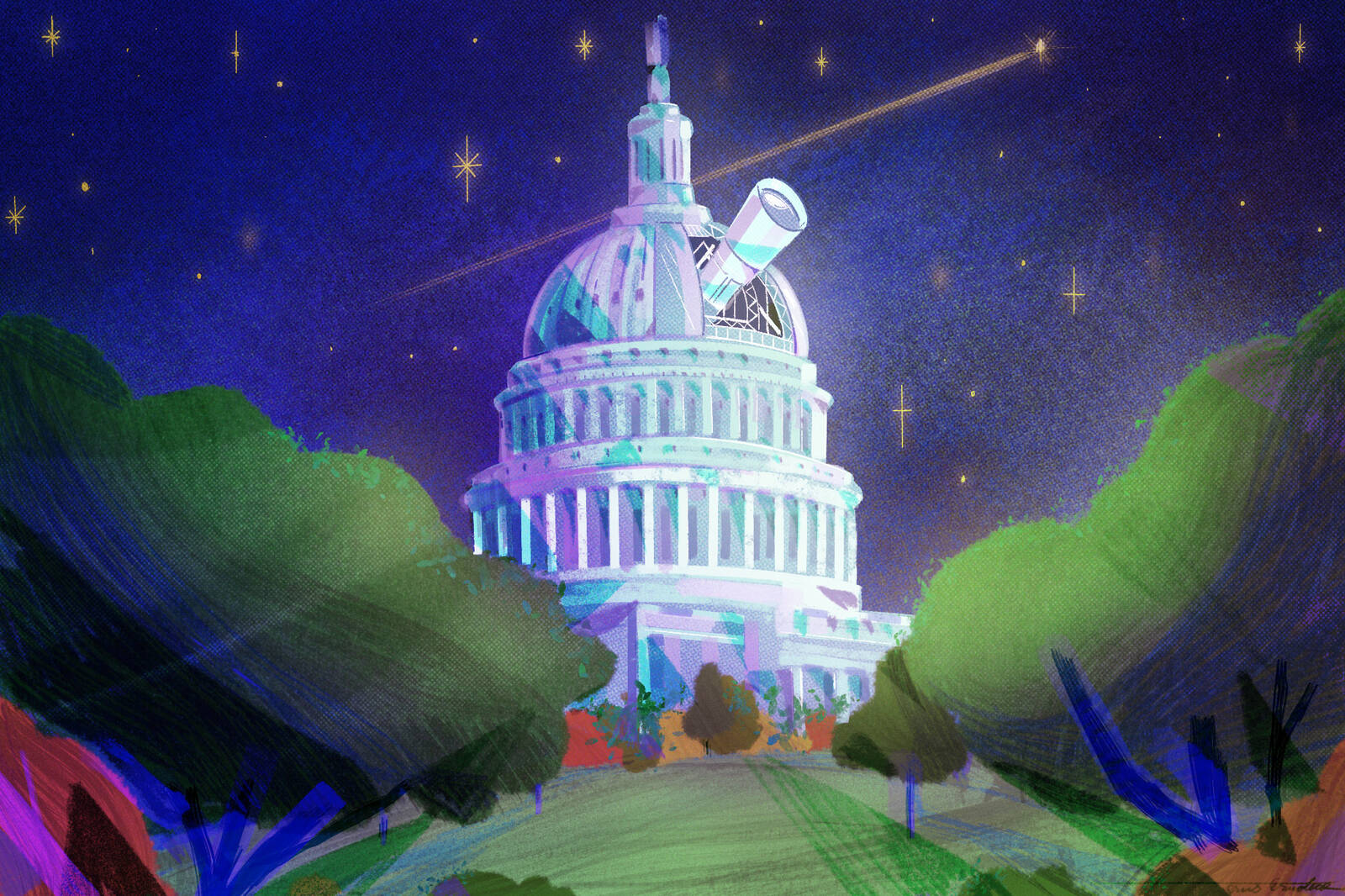This partisan disparity has raised concerns about the future of science research. But it’s unclear whether that difference in trust is mirrored in differences between how Democrats and Republicans fund science.
After analyzing 40 years of data on federal funding for science research under Republican or Democratic leadership, a team led by Furnas and Dashun Wang, the Kellogg Chair of Technology and a professor of management and organizations, found results that go against common assumptions. Under Republican presidencies or when the party was in control of the House of Representatives, the government provided more funding for science and research.
“The narrative that Republicans are or have long been anti-science does not appear to be true, at least by this measure and during this time period,” Furnas says.
Still, the high level of science funding in the past might not necessarily carry over to today’s landscape of steep political polarization. In the first half of 2025, for instance, the Trump administration and Republican-led Congress enacted or proposed sweeping budget cuts to key departments and institutions in science research, including the National Institutes of Health (NIH) and National Science Foundation (NSF)—a marked shift from prior trends.
“What’s happening right now is a really strong break from the historically strong bipartisan and robust Republican investment in science that has fueled an incredible amount of innovation and economic growth,” Furnas says. “A departure from that could threaten that prosperity.”
Defying expectations
The research team, which also included Harvard PhD student Nic Fishman and Leah Rosenstiel of Vanderbilt University, took a broad definition of science for their study.
They looked at funds allocated not only for projects commonly associated with science research like those at NASA and the CDC, but also any work that contributed to knowledge creation, such as development programs within the Department of Defense (DOD) and policy evaluations by the Congressional Budget Office.
They focused on funding provided from 1980 to 2020 through federal appropriations, which represent the bills passed by Congress and signed by the president authorizing funds for specific purposes and agencies in a given fiscal year. The publicly available data was derived from the U.S. Comparative Statements of Budget Authority—which includes both proposed budgets and approved bills—as well as the conference reports or statements released along with the passing of the bills. (The study excluded funding that came from emergency measures, such as the stimulus act of 2009.)
In all, the data covered 171 federal appropriations accounts across 27 federal agencies associated with science or research activity. This included both funds for government programs and contracts with private entities.
Focusing on appropriations data allowed Wang, Furnas, and colleagues to assess federal science funding across all major spending categories (grants, private contracts, and internal research). It also enabled them to track yearly changes in funding and partisan control within the House of Representatives, Senate, and presidency.
Overall, the team found that Congress dedicated more funding to science and research when the House of Representatives was controlled by Republicans than when it was controlled by Democrats. More funding also went to science and research under Republican presidents, though there were no significant differences in funding when Democrats or Republicans controlled the Senate.
Science and research-related funding was, on average, about $150 million higher annually per account when Republicans controlled the House of Representatives, and $100 million more when there was a Republican president.
In addition, when Republicans controlled the House of Representatives, Congress not only approved larger amounts of money for science funding but also proposed more than Democrats did in the earliest stages of the appropriation process.
“We see this pattern, where the House proposes more for science, in some of the earlier stages of the bargaining process and we see it in the final outcome,” Furnas says.
From the CDC to the DOD
The researchers also found that the partisan gap in science funding appeared to grow more pronounced over time: when there was a Republican president, the government poured even more money into science research in 2001–2020 than in 1980–2000.
Of note, Republicans’ greater financial commitment to science was not simply a result of targeted spending for agencies and departments like the DOD that their party typically prioritized. Republican lawmakers in the House of Representatives funneled more money toward science research in the CDC, NASA, NIH, and NSF, for instance, than did Democratic lawmakers. And the proportion of funds that Republicans distributed to different areas of science research was relatively similar to the distribution under Democrats.
The one department that received more science funding under Democratic leadership was the Department of Energy, potentially because of the party’s increasing interest in renewable energy, according to the researchers.
Expanding upon their initial analysis, the team examined one subset of science funding—grants—using a different dataset, only to arrive at a similar conclusion.
The 103 U.S. federal funders that offered science grants between 1952 and 2019 each gave, on average, around $70 million more per year when Republicans controlled the House of Representatives than when Democrats were in control. However, when Republicans controlled the Senate, funders dispersed $45 million less for science grants each year.
“We don’t see large detectable differences in the fields of research that [partisans] end up funding,” Furnas says. “So the main effect we found was likely not driven by concentrated differences in one particular area.”
A break from history
Though Republican lawmakers provided more funding for science research throughout the study period, the researchers note that the findings do not imply that Democratic lawmakers have not valued or supported science research.
Both parties historically believed that science is a good investment for the government, Furnas says, “but one possible explanation for the finding that Democrats funded science less might be because they have a lot more competing social-spending priorities. They care more about education funding. They care more about welfare funding, about social-safety-net funding. There are more areas that Democrats want to appropriate money for, and so they have to make more trade-offs.”
By and large, the research shows that both the total amount of science funding as well as science funding’s share of the total federal budget either stayed consistent or grew over time, regardless of the political party in charge.
But recent shifts in the political climate and funding priorities are poised to break that historical trend. A lack of steady support or funding for science could curb the kind of scientific progress that has historically served as a catalyst for growth and innovation in society, from the development of lifesaving medications to emerging technologies like generative AI.
“Control over government institutions switches back and forth between Democrats and Republicans on relatively short time horizons,” Furnas says. “But science takes long-term commitment and has long-term time horizons.”
“The fundamental tension between short-term political volatility and the long-term stability that science demands highlights a fundamental area of study in this interface of science and politics,” says Wang, who also serves as director of CSSI and the Northwestern Innovation Institute, and as codirector of the Ryan Institute on Complexity. “That is what we are now focusing on.”




